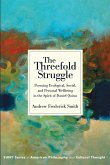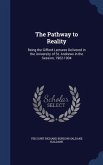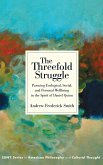The 'Way of Fire' expounded by Raphael is that via operativa which leads to the kindling of the Fire, the mastering and directing of the Fire, and the solution of this Fire. This process of realisation, in harmony with the initiatory Tradition, is made practical through three lines of work, suiting each person's qualifications: 1. Realisation according to Alchemy (Section I, Chapter I) 2. Realisation according to the Love of Beauty (Section I, Chapter II) 3. Realisation according to Traditional Metaphysics (Section I, Chapter III). What does Raphael understand by Alchemy? He understands the transmutation of 'lead' into shining, radiant Gold, the transmutation of all our individualised psychosomatic powers into universal Powers. This involves a profound rectification and distillation of our individualised earthly fire, so that it becomes Fire which interpenetrates everything, illumines everything, and resolves everything. The second chapter of the first section is devoted to Realisation according to the Love of Beauty. It is the way for those who are sensitive to 'transcendental Aesthetics' as Harmony/Accord with the intelligible world. According to Coomaraswamy, Brahman, or the supreme Being, may be appreciated as Beauty, Truth, or Perfection, according to whether it is considered from the viewpoint of aesthetics, epistemology, or ethics. Art is an expression of Beauty; science, in its broad meaning, of Truth; ethics, of Perfection; while the philosophia perennis, or traditional metaphysics, embraces all three. This shows that these three expressions are nothing but a unity: Beauty contains Truth and Perfection; Truth contains Beauty and Perfection; and Perfection cannot but contain Beauty and Truth. The third chapter is devoted to the 'metaphysical Way'. It is useful for all who, putting to one side the limited discursive mind, wish to enter the domain of pure Intellectuality (nóesis). In this dimension the two previous roads merge, because all quantities (number) and all qualities (tones) resolve themselves in the One-without-a-second. The chapters of the second Section complement and assist the three chapters of the first section, touching on specific points of guidance for spiritual discipline/ascesis. For example, the chapter devoted to 'Superimposition' is relevant and complementary to the third chapter of the first section. In the same way, 'Desirelessness', 'The empirical ego', and so on, complement the first chapter, while others assist all three chapters.








